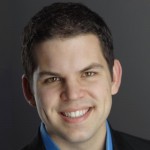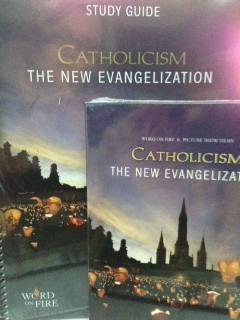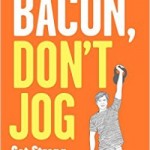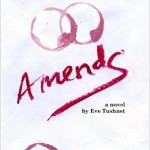When, in 2011, Father Robert Barron’s Word on Fire Ministries released the first part of its “Catholicism Project”, the book-and-video series Catholicism, a Journey to the Heart of Faith, I called it “a course in revolution”. Major blocs of the beautifully-wrought video were picked up and aired by PBS and the book is a stand-alone modern classic that I still frequently give as a gift because it is such a readable and thoughtful overview of the faith.
The second part of the Catholicism Project takes a look at the New Evangelization — what it is, why it is needed, and how it is taking shape in our parishes and across the world — and it is meant to help Catholics come together, within their communities, to light the missionary spark necessary to bring the Light of Christ to a world where shadows seem to be ever-advancing.
In the video presentations, Father Barron takes us to World Youth Day in Australia — and to the United Kingdom, where Catholic Voices is doing such impressive work — and shows the early flames which are beginning to lick upwards and grow following two spectacularly successful papal visit. If it is depressing to watch people, at the start, admit that they never attend mass or even think to make a visit to a church outside of a wedding or funeral, excitement grows amid scenes of young people not only participating in public worship but actively training themselves to become evangelists for the faith. Subsequent videos bring interviews with Ross Douthat, author of Bad Religion (another great book), George Weigel — whose most recent book is all about Evangelical Catholicism in the 21st Century.
 As companion to the video there is a study guide, written by Brandon Vogt (over whom I seem to incessantly gush). It helpfully gives overviews of each video, and then offers questions — perfect for small-group discussion but also worthwhile to do individually — to help further understand what has been discussed, and explore how to apply what has been learned. Lots of excellent book recommendations in there, too.
As companion to the video there is a study guide, written by Brandon Vogt (over whom I seem to incessantly gush). It helpfully gives overviews of each video, and then offers questions — perfect for small-group discussion but also worthwhile to do individually — to help further understand what has been discussed, and explore how to apply what has been learned. Lots of excellent book recommendations in there, too.
I actually had occasion to interview Father Robert Barron not too long ago, and one day, when I get done transcribing that thing, I will post it here, but I also had a chance to talk recently to Brandon about both New Evangelization presentation, and the happy news that he is leaving engineering to work full-time for Word on Faith. A “dream job”, as he calls it.
ELIZABETH SCALIA: Tell us what makes this second segment of the “Catholicism Project” different from the first, both in terms of emphasis and media?
BRANDON VOGT: The two films differ in a couple major ways. First, the original Catholicism was more epic in scope. It was a ten-part, groundbreaking series, with a 22-week study program which systematically walked through the entire Catholic faith. However, the sequel is a bit shorter. It’s only 90-minutes long, though the four-disc DVD set contains lots of bonus talks and interviews.
The second main difference is that Catholicism: The New Evangelization is far more practical than its predecessor. Catholicism was designed to show what Catholics believe, but the sequel helps us share it. Most of the film features on-the-ground examples of the New Evangelization in action instead of lengthy catechetical segments.
The goal of both the film and study program is to highlight examples of people doing the New Evangelization, not just talking about it. In that way, it follows Pope Paul VI’s observation that, “Modern man listens more willingly to witnesses than to teachers, and if he does listen to teachers, it is because they are witnesses.”
ES: The first series actually grabbed the attention of secular outlets, like PBS. How effective do you think Catholicism: The New Evangelization will be at reaching beyond the pews in a similar manner?
BV: Visually, the new film is just as arresting. Catholicism: The New Evangelization brings back the original creative team, which means we get the same cinematography, moving score, and high production value as in Catholicism.
But the film’s impact will surely be different. The original series meant to draw secular people to the Church through its beauty and brilliance. Fr. Barron always says that the New Evangelist must “lead with beauty” and the original film did just that, for as one reviewer said, it was “the most vivid catechism ever created.”
But while that film targeted the spiritually bored, Catholicism: The New Evangelization aims at evangelists themselves. It’s designed to equip Catholics so that, after absorbing the film and study program, they can embark themselves into the secular world, permeating it with Christ.
Simply put, the new film will be judged by how it helps people carry out the New Evangelization. And by that measure, we’re expecting big things.
ES: You wrote the study guide; what sorts of responses are you getting from parishes or groups? Are you seeing action and energy in response to the program?
BV: We’ve already received lots of great feedback. Many people have noted how clear and practical the program is. Several have said things like, “I knew the New Evangelization is important, but I’ve never known what it actually is. Now I do, and now I know how to implement it.”
They especially like the program’s sixth lesson, designed by Peggy Pandaleon at Word on Fire, which helps them create a personalized action plan to evangelize in their own life.
Finally, people appreciate that the study program is a bit shorter than the original. It’s only six weeks long, so it doesn’t require a huge time commitment. Of course, that means you can’t go as deep as you might like. But it also means that more time-crunched people can join the movement.
ES: Word on Fire recently announced that you would be joining them, full-time, as a member of their team. This is as hand-to-glove as a fit can be, in my opinion, but also kind of a brave move, when you’re supporting such a young family. For those of us facing work-related situations, what helps in discernment?
BV: Well first, I’m absolutely thrilled about the new position. It’s a dream job, in more ways than one. Fr. Barron and Fr. Steve Grunow, CEO of Word on Fire, are both heroes of mine, and the whole Word on Fire team is loaded with talented, passionate people.
But to answer your question, ever since I married my wife, I’ve grounded my discernment on two questions. The first is, “How will this decision affect my vocation as a dad and husband?” Will this action make me a better dad? A better husband? If so, I do it. If not, I avoid it. This alone has saved me from many bad decisions, and led to many great ones.
The second question I ask stems from Frederick Buechner’s magnificent adage. When explaining how to discern your calling, he suggests, “The place God calls you to is the place where your deep gladness and the world’s deep hunger meet.”
I constantly ask myself, what’s my deep gladness? What fires me up? What do I wish I was doing while doing other things? Remember Eric Liddell in “Chariots of Fire”? He nailed this question: “I believe God made me for a purpose, but he also made me fast. And when I run I feel His pleasure.”
Right now, my two passions are new media and evangelizing the secular culture. And by the grace of God, those passions found a deep need at Word on Fire. The “hand-to-glove” fit you described resulted from simply plugging my passion into its natural hole.
All of us can do that. It may not be instantaneous–it took me five years to find that fit–but somewhere, at some time, there’s a deep hunger waiting for everyone’s deep gladness. Keep your mind and heart open and you’ll find it.
ES: While in Rome for the Vatican Blogger Meet-Up of 2011, you stood on the colonnade for John Paul II’s beatification — apparently not far from me, and yet we never crossed paths; as a convert to Catholicism, what was that like for you — grand spectacle, coupled with the intimacy of Holy Communion?
BV: It was incredible, and still ranks as the highlight of my young Catholic life. I had only been Catholic for three years, and I remember standing up there, asking myself, “God, how did I end up here?!”
What struck me most was the universality of the moment. I never experienced anything like that as a Protestant. Looking down at St. Peter’s square, at the hundreds of thousands of people from all over the world, each singing and cheering in their own language, rich and poor, young and old, seeking and confident—I saw the Church in a nutshell. There She is. There were the tribes of Israel, gathered by Christ into his Church.
In that poignant moment I realized that if Jesus had established a universal Church, this is exactly what it would look like. It wouldn’t be small and geographically isolated. It would stretch across the nations and span the horizon of human experience.
Of course, receiving communion among the vast and diverse crowd was extraordinary. It was an intimate encounter, you’re right, but also one of those rare moments when you realize that we’re all in this together. We’re all grafted onto the same vine, we all tap into the same spiritual power, and the same Lord who inspires Christians in Poland, India, and Nigeria lives and moves in the States.
I wish Brandon great happiness in his new job, and am enthusiastically recommending Word on Fire’s new program — in fact, I’m donating a kit to my parish, in hopes that they’ll start a program!













